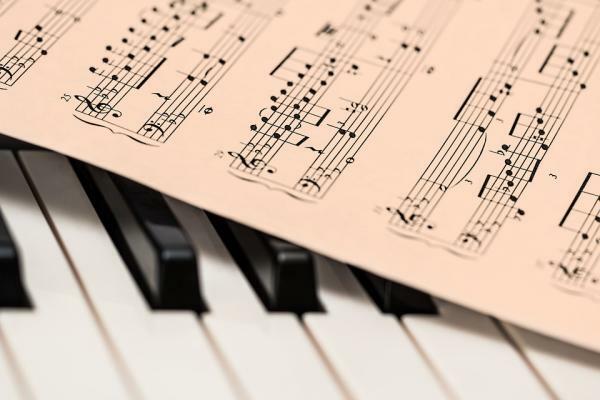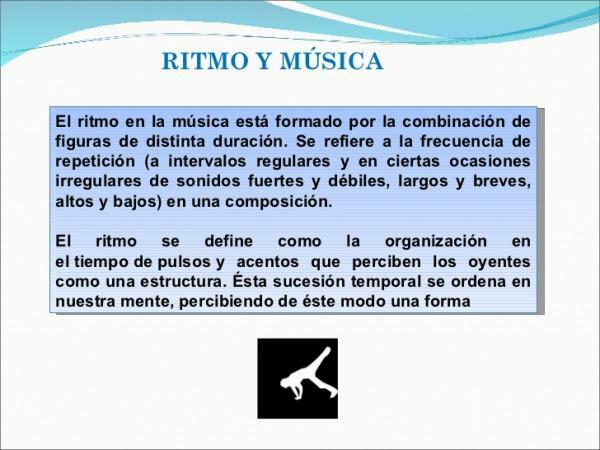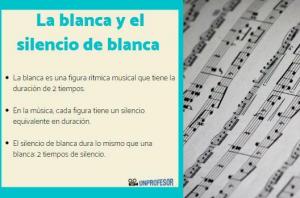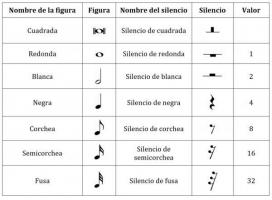Rhythm, pulse and tempo: definition and differences

You will often find yourself needing to move your feet, fingers, or your entire body when listening to music. There is a phenomenon in it that invites us to want to follow it, unite, participate in it. This goes beyond the theoretical, but we can analyze it with music theory to understand it. In this article by a PROFESSOR we will talk about this phenomenon in music that we can divide into the concepts rhythm, pulse and tempo: definition and differences.
Index
- How to count in music
- Definition of rhythm in music
- Definition of musical pulse
- Definition of tempo in music
How to count in music.
Many musicians or dancers go counting aloud or with gestures when they want to follow the music, this is a way of measuring it to play or step (in the case of dancers) at the exact moment. It is this synchronicity that gives strength to certain determined moments, contrast in the different parts of a work or song, and what gives us the desire to anticipate, that is, that we want to wait for what comes aurally because we can predict it.
We can say that the rhythm, pulse and tempo They are all responsible for this musical area. The three concepts are used simultaneously when talking about music and its relationship with numbers to understand it and that is why many times separating their meanings is difficult and confusing for us.
We are going to define and analyze these concepts one by one in order to clarify them.
Definition of rhythm in music.
We understand music vertically (pitch, note height) and horizontally, which is always relative to time or duration. Speaking of rhythm we refer exclusively to a succession of notes or sounds, regardless of its tuning. The rhythm can be created by both melodic instruments and percussion instruments, even without the need these are instruments, since any hit produces a sound, which is all we need to create rhythm.
Sometimes we hear someone refer to the rhythm in a certain way. For example "the rhythm of salsa" or "rock rhythm". This is not incorrect, since in those cases we refer to a Pattern determined rhythm, but remember that "rhythm" is the general concept. In music the creation of patterns is unlimited, however some have been standardized and many styles Musical instruments have certain patterns defined by the beat and the tempo, which are all elements related to rhythm.

Image: Slideshare
Definition of musical pulse.
To make this concept easily understood, we can define it as follows: the pulse is the way to count. Since music is the organization of different elements, we must make sure that each note, each musical figure is exactly where it should be. To interpret music we must keep score, and for that we count.
Since music is varied and has many styles, there are also different ways of counting. The way of counting is determined by the rhythmic structure of a work, which we mentioned before relating certain patterns to certain styles.
The beat and the musical meter
To continue we must have knowledge of the following concepts: compassY metrics.
- The beat is the musical unit with which we divide a song or a work. In a measure we can write only a certain number of notes and this number depends on a number that is written as a fraction at the beginning of the staff. This number is the metrics.Thanks to this number we can know how many notes fit in a measure and therefore, it tells us how to count.
- What meter is basically the rhythmic structure in music, the way we count ensures that we are going to respect that structure, and that we are going to interpret it in a defined way. For example the waltz. The waltz is determined by having a metric of ¾, and the pulse we carry is by counting quarter notes and accentuating the first beat of the measure: "1 – 2 – 3, 1 – 2 – 3". It is this combination that makes us recognize this musical genre.
If we change the metric of a topic, this does not mean that we stop recognizing it, in fact it is very common to make different interpretations of a theme in genres such as jazz, but we must be aware that by doing so, the meaning or intention of a work can change drastically.

Image: Slideshare
Definition of tempo in music.
Talking about tempo is talking about speed with which a musical theme is interpreted. In music, tempo is measured by "Bpm" which comes from English: beats per minute.
Higher speed equates to more notes in less time, so this refers to the way of measuring tempo, the number of notes or beats (beats) that elapse in one second. A smaller number equals a slower tempo. A higher number equals a faster tempo.
As with rhythmic patterns, tempo has been linked to different styles. The tempo is not necessarily exact but has been determined by an approximate interval of bmp. There are names assigned depending on the speed range. For example Adage: from 56bpm to 66bpm, Allegro: from 110 to 132bmp and Presto: from 168 to 177bmp, among many more.
Music is a crude art. Only by taking into account an element such as rhythm can we explore unlimited options to create something unique. Now that you know these elements, you will have better communication when it comes to rhythm.
We hope you have enjoyed this article by a PROFESSOR and we invite you to share your opinion in the comments.

Image: Music Meruelo
If you want to read more articles similar to Rhythm, pulse and tempo: definition and differences, we recommend that you enter our category of Musical language.



